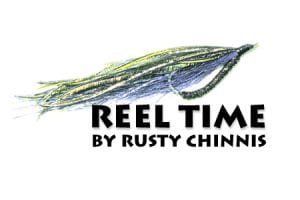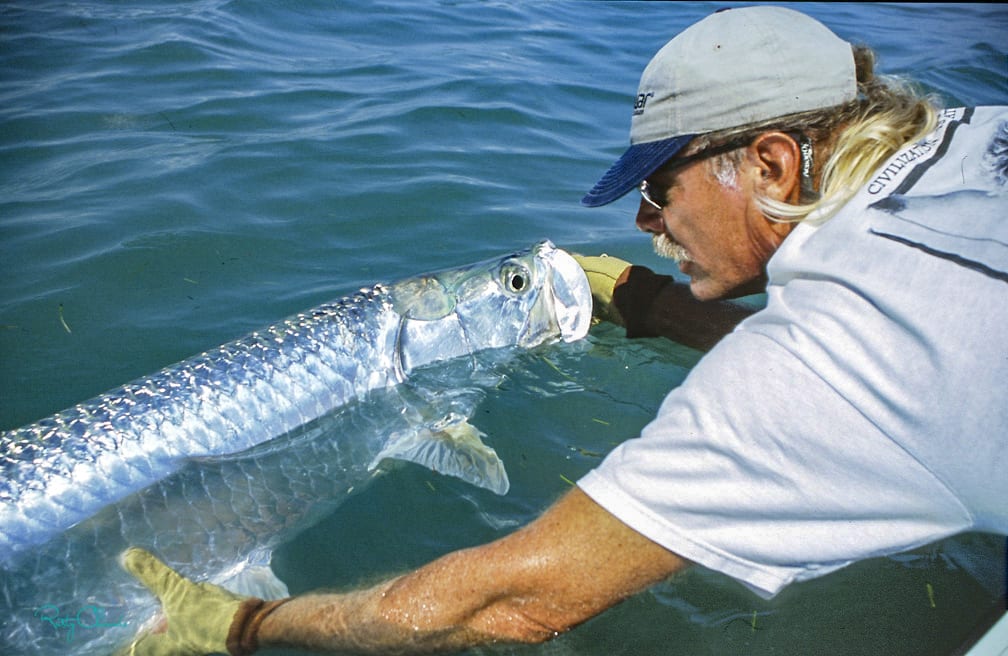Catch and release used to be a relatively new concept in sport fishing, one that recognized that fish populations are vulnerable and not the endless resource that they were once thought to be. Now the concept is commonplace and has even spawned a sort of backlash, as the “I Kill Fish” sticker on the back of a truck I saw recently attests.
Fishermen who fish mostly for fun have been criticized because many see catching and releasing fish as playing with fish. Anglers, unlike hunters, can pursue their passion and release their prey. Both hunters and anglers are quite often great champions of their respective passions and invest their time and money in protecting the habitat and well-being of fish and animals.
Most anglers I know who practice catch and release have no problem with taking an occasional fish home for dinner. It’s more about enjoying the sport and trying to be proactive in helping it to remain healthy and viable. There are many species, notable among them tarpon, that anglers seldom, if ever, kill. Catch and release is not just about releasing fish that you don’t want, it’s also about safely releasing undersized fish or species that aren’t valued at the table. Catch and release in any form is a wise use of the resource, but unfortunately, many anglers don’t know how to properly handle fish.
When we get cut, bruised or battered we can head for the local drug store, or in more extreme cases the Emergency Room. Not so for fish. For them, it’s heal or die, and in their world, it’s the sick and wounded that first fall prey to predators. What a shame to do the right thing, releasing a big speckled trout full of roe, only to have it eaten by a shark, barracuda or other predator because it wasn’t handled properly.
The first step I would suggest is to make sure you match tackle to the task. Trying to land a big tarpon on 20-pound tackle might be OK if you’re experienced, but to the uninitiated, it’s like announcing a free meal to the sharks that ply local waters looking for weak or injured prey. Enjoy the action, but land the fish as quickly as possible. Once you have the fish subdued, the best course is to never take them out of the water. If you’ve been fighting them for a long time (think tarpon), make sure you revive them properly. If you can reach the water over the gunwale, slowly move the boat forward while holding the fish firmly but lightly. This forces water and oxygen through their gills and helps them recover from oxygen depletion. They’ll let you know when they’re ready to go.
The hook is probably the next most important consideration. Either a circle hook or a barbless hook is usually best for anglers and their fish. The key to keeping fish on a barbless hook is to keep the line tight. Circle hooks are recommended for inexperienced anglers and on fish that tend to swallow the hook, like speckled trout. Fish secrete a protective coating that covers the scales and skin. This slime coat acts as a defense against invasion by bacterial, parasitic and fungal pathogens. Whatever hook you use, a de-hooker will keep your hands safe and clean, preventing you from inadvertently harming the fish’s protective slime coat and protecting hands from sharp gills and teeth. De-hookers come in various shapes depending on how they’re used. The simplest is J-shaped and removes hooks in or near the jaw. A circular-shaped longer version allows anglers to remove hooks that are deep in the throat of a fish or in the jays of a big fish like a barracuda.
Anglers who fish for reef fish like snapper and grouper need to learn how to “vent” fish with inflated swim bladders. Bringing the fish up from deep depths fast bloats the bladder, which has to be punctured to allow the fish to reach the bottom. A good presentation of the process is available online.
Anglers that release a trophy-sized fish may want to take home a picture. Here are a few tips that will help you record your catch. Set your exposure in advance and have an idea where in the boat you want to take the picture. The best picture for the fish would be when it’s still in the water, but if you do remove the fish, hold it horizontally, with one hand near the head, and the other hand under the fish’s belly to support its weight. Holding a fish vertically puts a strain on the internal organs and can potentially dislocate its jaw. This is particularly important with large fish. Lastly, eliminate any extraneous objects like rods and focus in on the subject.
By being prepared we can get the fish back in the water fast, thus ensuring its chances of survival. Taking the time and having the tools and knowledge to release fish mindfully is a great way to help ensure we have a healthy population of fish now and into the future.
































